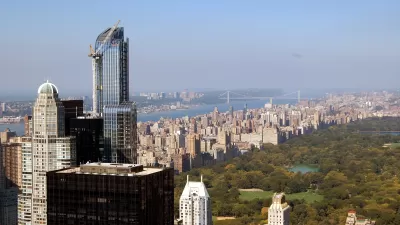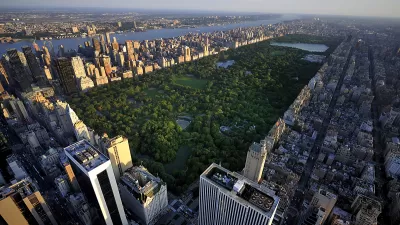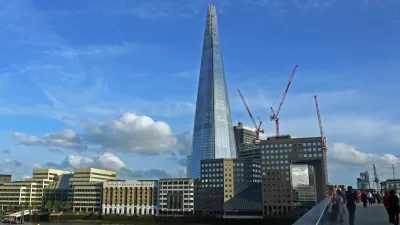The Washington Post details the concern over the shadows cast by skyscrapers on the city street below. The latest high-profile case study of the ability of skyscrapers to block the sun: New York's Midtown.
Emily Badger writes that the collection of high-rises forthcoming in New York's Midtown "are changing more than the city’s famous skyline… They will also transform New York far below, further darkening city streets and casting long shadows that will sweep across Central Park."
Badger sums up the issue and its political complications:
"For cities, shadows present both a technical challenge — one that can be modeled in 3-D and measured in 'theoretical annual sunlight hours' lost — and an ethereal one. They change the feel of space and the value of property in ways that are hard to define. They’re a stark reminder that the new growth needed in healthy cities can come at the expense of people already living there. And in some ways, shadows even turn light into another medium of inequality — a resource that can be bought by the wealthy, eclipsed from the poor."
The coverage digs specifically into the New York example, with a shadow study of Central Park with the proposed construction in place, insights from the Municipal Art Society of new York, which is one of the local organizations most vocally opposing the new residential development, and also linking to a recent story by Dan Rubinstein about a March 2015 action by the New York City Council to create a task force to study the impacts of skyscraper shade on the city's parks.
Badger also notes that controversies like those embroiling New York City as a new "Billionaires' Row" of high-rise residential is built near Central Park can also be found in cities like San Francisco and Toronto. The article, for instance, includes an example of the 3D modeling software that allows developers to track shadows in San Francisco in accordance with that city's 1984 "sunlight ordinance," which was just updated last year [pdf].
FULL STORY: In the shadows of booming cities, a tension between sunlight and prosperity

Alabama: Trump Terminates Settlements for Black Communities Harmed By Raw Sewage
Trump deemed the landmark civil rights agreement “illegal DEI and environmental justice policy.”

Study: Maui’s Plan to Convert Vacation Rentals to Long-Term Housing Could Cause Nearly $1 Billion Economic Loss
The plan would reduce visitor accommodation by 25% resulting in 1,900 jobs lost.

Planetizen Federal Action Tracker
A weekly monitor of how Trump’s orders and actions are impacting planners and planning in America.

Wind Energy on the Rise Despite Federal Policy Reversal
The Trump administration is revoking federal support for renewable energy, but demand for new projects continues unabated.

Passengers Flock to Caltrain After Electrification
The new electric trains are running faster and more reliably, leading to strong ridership growth on the Bay Area rail system.

Texas Churches Rally Behind ‘Yes in God’s Back Yard’ Legislation
Religious leaders want the state to reduce zoning regulations to streamline leasing church-owned land to housing developers.
Urban Design for Planners 1: Software Tools
This six-course series explores essential urban design concepts using open source software and equips planners with the tools they need to participate fully in the urban design process.
Planning for Universal Design
Learn the tools for implementing Universal Design in planning regulations.
Caltrans
Smith Gee Studio
Institute for Housing and Urban Development Studies (IHS)
City of Grandview
Harvard GSD Executive Education
Toledo-Lucas County Plan Commissions
Salt Lake City
NYU Wagner Graduate School of Public Service





























